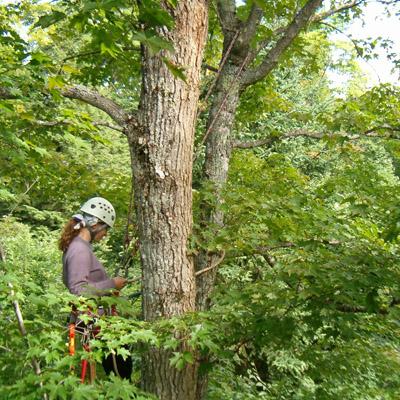Determination of New Silvicultural Guidelines to Balance Sustainable Production of Forest Products and Critical Forest Habitat Structure in Managed Northern Hardwood Forests

Forest structural habitat features such as old, large trees, standing dead trees, and decaying logs provide important habitats for a diversity of forest-dwelling organisms in many forest types. Previous research shows that the abundance of these habitat features can be regulated through forest management decisions. In the Northern Forest region, many forest managers seek to modify forest management plans to improve availability of these habitat features while providing for sustainable production of wood products.
NSRC researchers conducted intensive studies in forests of New York and New Hampshire to better understand the ecological roles of large, old, residual trees and decaying trees and logs. Researchers determined that certain managed stands contain only about half the amount of decaying wood volume of unmanaged, old growth stands due to a greater accumulation of large logs in old forests. Large, residual trees support greater amounts of arboreal lichens; provide habitats for unique groups of lichens not found on smaller, younger trees; support diverse and unknown invertebrate (especially mite) communities in the lichen mats; and contain greater numbers of large wildlife cavities than do smaller trees.
The data will be used to modify mathematical models for stand growth to help forest managers make decisions regarding the costs and benefits of retaining varying levels of tree heights in managed woodlots. Maintaining structural complexity in the forest will help to sustain a diversity of habitats for forest-dwelling organisms.
Download printable version [PDF]
Download full final report [PDF]
